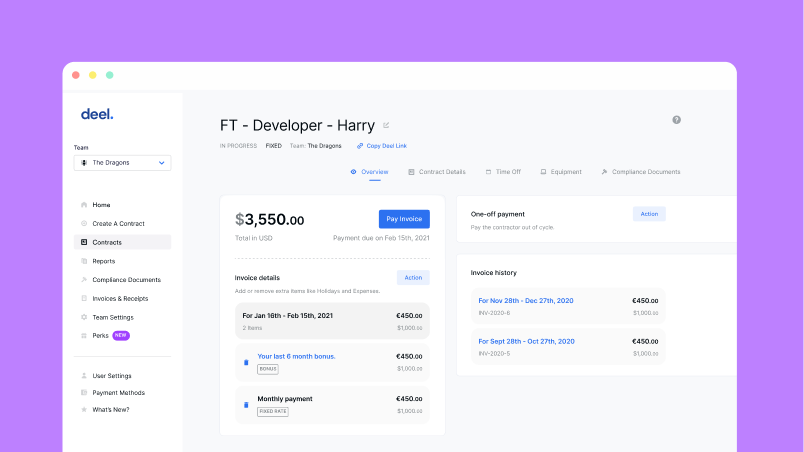Ultimate Guide on Global Hiring Toolkit
Streamline Your Recruitment Process and Expand Your Talent Pool
Introduction - Global HR
Welcome to the rapidly growing global job market, where companies are seeking top talent from around the world to join their teams. While this offers exciting opportunities for both employers and employees, it also presents complex challenges in the hiring process. In today's competitive business landscape, having a well-designed global hiring strategy is crucial for success. This is where the "Global Hiring Toolkit" comes in. As a comprehensive guide designed to assist companies in their hiring process for global positions, this toolkit provides valuable resources and tips for navigating the complexities of international hiring. From cultural considerations and legal requirements to practical tools and templates, this guide is an essential resource for HR professionals, managers, and recruiters looking to expand their talent pool on a global scale. In this article, we will delve into the world of global hiring, discussing the current trends, challenges, and best practices for recruiting top talent from around the world. Let's explore the ultimate global hiring toolkit and discover how it can help you streamline your recruitment process and expand your talent pool.
| Click here to run payroll in 100+ countries with one platform |
Understanding the Global Hiring Landscape
The global job market is rapidly growing, and with it comes a demand for international talent. Employers are realizing the benefits of hiring globally, including diversity and access to a wider talent pool. However, global hiring also presents its own set of challenges, such as cultural differences and legal requirements. It is important for companies to understand the global hiring landscape and have a well-designed strategy in place to successfully attract and retain top global talent.
Current Trends in Global Hiring
In recent years, there has been a significant increase in companies seeking to hire internationally. This trend is expected to continue as businesses expand their operations globally. According to a survey by the Society for Human Resource Management, 74% of organizations have hired employees from other countries in the past 5 years.
The Benefits of Global Hiring
Global hiring offers many benefits, including access to a diverse talent pool. By hiring globally, companies can tap into a wider range of skills, experiences, and perspectives. It also allows for a more diverse and inclusive workplace, which has been shown to improve overall company performance.
The Challenges of Global Hiring
Despite the benefits, global hiring also poses its own set of challenges. Cultural differences can impact the hiring process and require a deeper understanding of cultural nuances. Additionally, legal requirements, such as work permits and visas, must be carefully navigated to ensure compliance with international laws and regulations.
In summary, understanding the global hiring landscape is crucial for companies looking to expand their talent pool on a global scale. With a growing demand for international talent, it is important for businesses to have a thorough understanding of the benefits and challenges of global hiring.
Cultural Considerations in Global Hiring (Onboarding)
Understanding and respecting cultural differences is crucial for success in global hiring. To create a diverse and inclusive work environment, it is important to understand and navigate cultural nuances in the hiring process. This can include tailoring job descriptions and interview questions to suit different cultures, as well as considering potential communication barriers and adapting accordingly. Tips for navigating cultural differences in global hiring include researching the cultural norms and values of the target country, avoiding assumptions and stereotypes, and being open-minded and culturally sensitive. A diverse and culturally aware team can bring a range of perspectives and ideas, leading to a more innovative and successful company. By prioritizing cultural considerations in global hiring, companies can also avoid potential misunderstandings and conflicts in the workplace.
Legal Requirements for Global Hiring (Top Talent)
Global hiring comes with its own set of legal implications that must be considered by companies seeking to expand their talent pool internationally. It is crucial to ensure compliance with international laws and regulations to avoid legal consequences and protect both the company and the employee. This includes obtaining work permits and visas for global hires, which can be a lengthy and complex process. To streamline this process, it is recommended to seek the assistance of legal professionals with expertise in global hiring. Additionally, it is important to thoroughly research and understand the legal requirements of the countries in which the company is hiring. Failure to comply with these legal requirements can result in delays in the hiring process and even legal consequences. Ensuring proper legal procedures are followed in global hiring is essential for a successful recruitment process.
Building a Global Hiring Strategy
Building a successful global hiring strategy is crucial for any company looking to expand their talent pool globally. To begin, it is important to define the job roles and responsibilities for the global position and conduct thorough research to understand the local job market and culture. It is also essential to create a budget specifically for global hiring to ensure proper resources are allocated. Additionally, creating well-written job descriptions and interview questions that cater to the needs and interests of international candidates can attract top global talent. Utilizing technology, such as applicant tracking systems and language proficiency tests, can also aid in streamlining the hiring process. By implementing a comprehensive global hiring strategy, companies can ensure a successful recruitment process and access a diverse pool of talented individuals from around the world.
Streamlining the Global Hiring Process
To effectively expand your talent pool globally, streamlining the hiring process is essential. This involves using tools and templates to increase efficiency and ensure a successful recruitment process. Here are some tips to help streamline your global hiring process:
- Consider using applicant tracking systems and online job portals to manage applications and track candidates.
- Utilize video interviews and language proficiency tests to efficiently assess candidates from different countries and time zones.
- Use technology to eliminate language barriers and streamline communication with potential hires.
By incorporating these tools and strategies, you can save time and resources while still effectively identifying top talent from around the world. This will also help you maintain a consistent hiring process and ensure fair evaluation of all candidates. With a streamlined global hiring process, you can confidently expand your talent pool and find the best fit for your global team.
Ensuring a Successful Global Hire
Proper onboarding and integration are crucial for the success of a global hire. It is important to create a welcoming and inclusive work environment for international employees. This can be achieved by providing cultural training, language support, and assigning a mentor or buddy for the new hire. Additionally, it is important to understand and address any potential challenges that may arise during the integration process. Solutions such as team building activities, open communication channels, and cross-cultural awareness training can help facilitate a smooth transition into the company culture. By ensuring a successful integration, companies can maximize the potential of their global hires and create a strong and diverse team.



